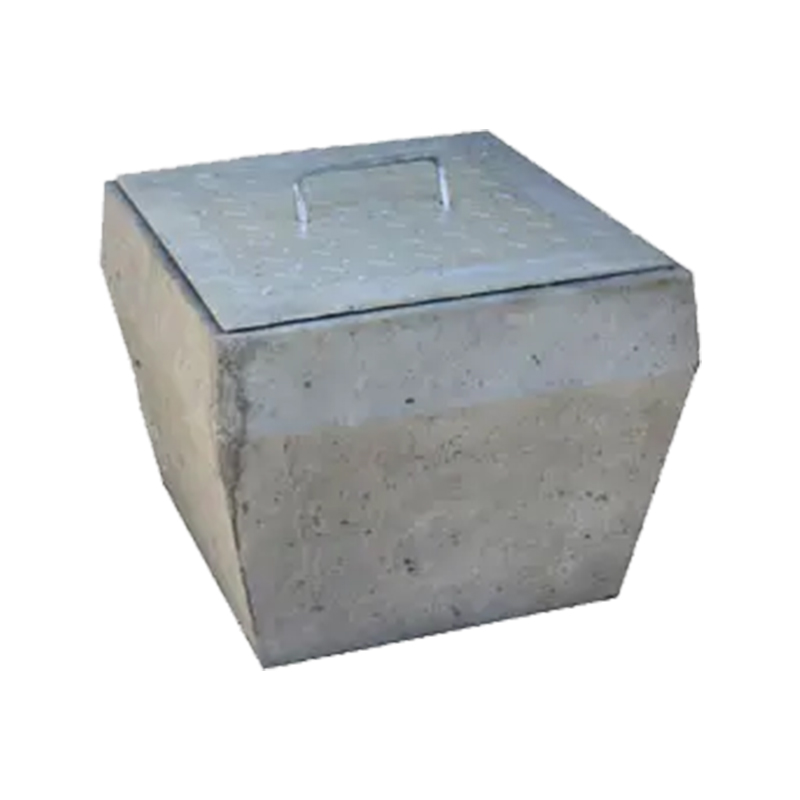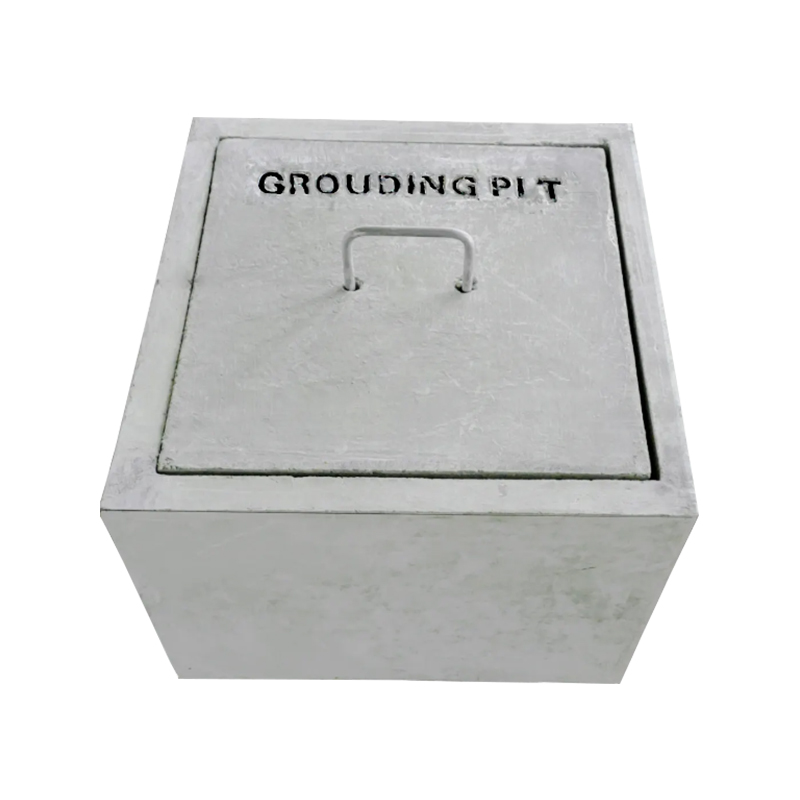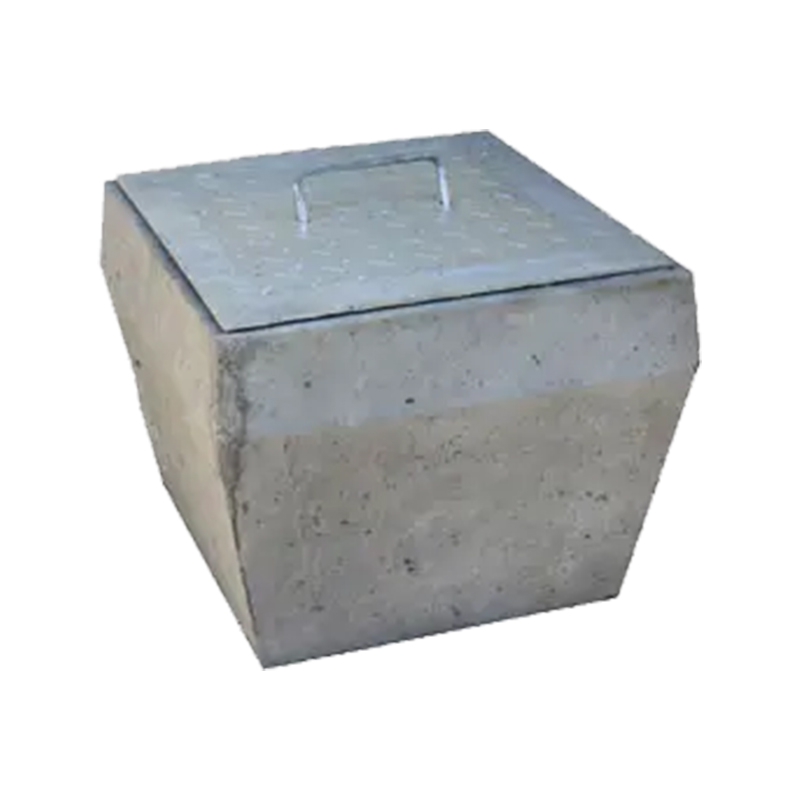The Concrete Inspection Pit Is Made Of Concrete With Mould Forming. The Advantages Are Strong, Impact Resistance, Cold Endurance And Long Life.
Key Features:
Concrete Construction: Made from high-quality concrete, these inspection pits are molded to precise specifications, ensuring uniform strength and durability.
Mold Forming: The use of mold forming techniques allows for the production of pits with consistent dimensions and structural integrity, tailored for specific applications.
High Strength: The inherent strength of concrete provides excellent load-bearing capabilities, making the inspection pit suitable for areas with heavy traffic or load-bearing requirements.
Impact Resistance: Designed to resist impact and physical stress, these pits can endure accidental collisions or heavy objects falling on them without compromising their structural integrity.
Durability: Concrete grounding inspection pits are built to last, with a long lifespan that minimizes the need for replacements or repairs. Their robust construction helps prevent deterioration from environmental factors, including moisture and chemicals.
Low Maintenance: The maintenance requirements for concrete pits are minimal, contributing to their cost-effectiveness over the long term.
Concrete Grounding Inspection Pit
-
-
Installation Data
Caliber(mm)Height(mm)MaterialAttached bus bar (mm)450*450370Concrete40*4*530-3*M10430*430500Concrete40*4*530-2*M10/3*M11The hole of bus bar can be customized drilling -

about us
Our Story
Xinchang TuAn Machinery Co., Ltd.Rooted in the past, facing the future?
Based on customer needs, connect the products and technologies required by customers with the scientific research capabilities of universities to achieve innovation based on customer needs.
TuAn is famous China Concrete Grounding Inspection Pit manufacturers and Concrete Grounding Inspection Pit factory, the company continuously strengthens cooperation with upstream and downstream enterprises, rapidly expands comprehensive service capabilities, and transforms from a single lightning protection enterprise to a comprehensive large-scale project supporting enterprise. After years of accumulation, TuAn has formed a stable customer base covering important fields such as petroleum and petrochemical, high-speed rail, and electric power.
Recommended Products
Basic Functions and Advantages of Concrete Grounding Inspection Pit
Definition and application background of concrete grounding inspection pit
Concrete grounding inspection pit is an infrastructure product used for grounding system detection, maintenance and management, and is widely used in grounding projects in the fields of power, communication, transportation, petrochemical, etc. This type of inspection pit reserves space to accommodate grounding connectors, conductors and other components, which is convenient for subsequent inspection and maintenance. Compared with lightweight material inspection pits, concrete grounding inspection pits are preferentially used in places with high load-bearing requirements, complex environments or dense traffic due to their structural strength and stability.
Structural material and manufacturing process characteristics
Concrete grounding inspection pits are mainly made of high-strength concrete materials and are produced using mold forming technology. Mold forming not only ensures the dimensional accuracy and structural consistency of each product, but also enhances the overall density and durability of the product. Concrete materials themselves have the characteristics of pressure resistance, impact resistance, and aging resistance, so that the inspection pit can withstand the test of external pressure and environmental changes for a long time. This manufacturing process enables the product to meet the customized requirements of size, shape and structure for different projects.
Main function: protection and support of grounding system
The core function of concrete grounding inspection pits is to provide protection space for conductors, grounding electrodes and connectors in the grounding system. This structure can effectively isolate the grounding components from the external environment, preventing corrosion or damage caused by soil, moisture, chemicals, etc. In addition, concrete inspection pits help maintain the structural integrity and electrical continuity of the grounding system, facilitating regular inspection and maintenance work when necessary. Such inspection pits are an indispensable component for places that need to meet ground resistance requirements.
Advantages of load-bearing performance
As a traditional building material, concrete is known for its high load-bearing capacity. Concrete grounding inspection pits have high compressive strength and impact resistance, and are suitable for installation in heavy-load or high-frequency use areas such as roads, parking lots, and industrial plants. Even in the case of vehicle rolling, equipment and heavy objects, the structure can remain stable and not easy to crack or break. This feature makes it an ideal choice for grounding system inspection points in high-load environments.
Durability and environmental adaptability
Concrete materials have excellent durability and can maintain stable physical properties under a variety of natural conditions. Whether it is high temperature, severe cold, humidity, or wind and rain, concrete inspection pits can be used for a long time without significant damage or performance degradation. In addition, concrete is not easily corroded by factors such as ultraviolet rays, rain, acid and alkali, reducing the need for maintenance caused by environmental factors. This durability provides long-term and stable infrastructure support for the grounding system.
Flexibility of installation and customization
Although the overall weight of the concrete inspection pit is large, its installation process is still efficient through construction methods such as factory prefabrication and on-site hoisting. The factory mold forming method supports a variety of sizes and structural customizations to meet the specific needs of different projects and installation environments. For example, in projects that require special openings, reserved pipelines or installation of additional devices, customization can be completed during the manufacturing stage. After installation, no large amount of subsequent modifications are required, shortening the construction period.
Contribution to the safety of the grounding system
The concrete grounding inspection pit can play a role in physical isolation and protection, reducing the interference of external factors on the grounding system. The inspection pit cover is reasonably designed to prevent foreign matter, rainwater or impurities from entering the pit, protecting the cleanliness and integrity of the internal grounding conductor. For power and communication systems, this protection can reduce the risks of grounding failure and short circuit, and improve the reliability of system operation.
Economical and long-term use value
Although the initial material and construction costs of concrete grounding inspection pits are relatively high, their long service life, low maintenance requirements and good structural stability make the overall life cycle cost competitive. There is almost no need for replacement or large-scale maintenance during long-term use, which helps save later operating expenses. This long-term value is particularly important in large-scale projects or projects with high reliability requirements.
Common application scenarios
Concrete grounding inspection pits are suitable for a variety of scenarios, including urban roads, industrial and mining enterprises, highways, railways, large power stations, substations, etc. In these places, the grounding system carries the important task of protecting personal safety and equipment safety, and concrete inspection pits provide essential physical guarantees for the inspection and maintenance of these systems. Especially in projects with high loads and high safety levels, concrete inspection pits are almost standard facilities.
Future development direction
With the improvement of infrastructure performance and environmental protection requirements in engineering construction, the future development of concrete grounding inspection pits may focus on material optimization and function expansion. For example, by introducing composite reinforcement materials, the strength and toughness of the inspection pit can be improved; embedded parts or intelligent sensor modules can be integrated into the structure to realize remote monitoring and data acquisition functions of the grounding system. In addition, the application of green building materials may also become a future development trend to reduce energy consumption and carbon emissions in the manufacturing process.
 English
English 简体中文
简体中文







